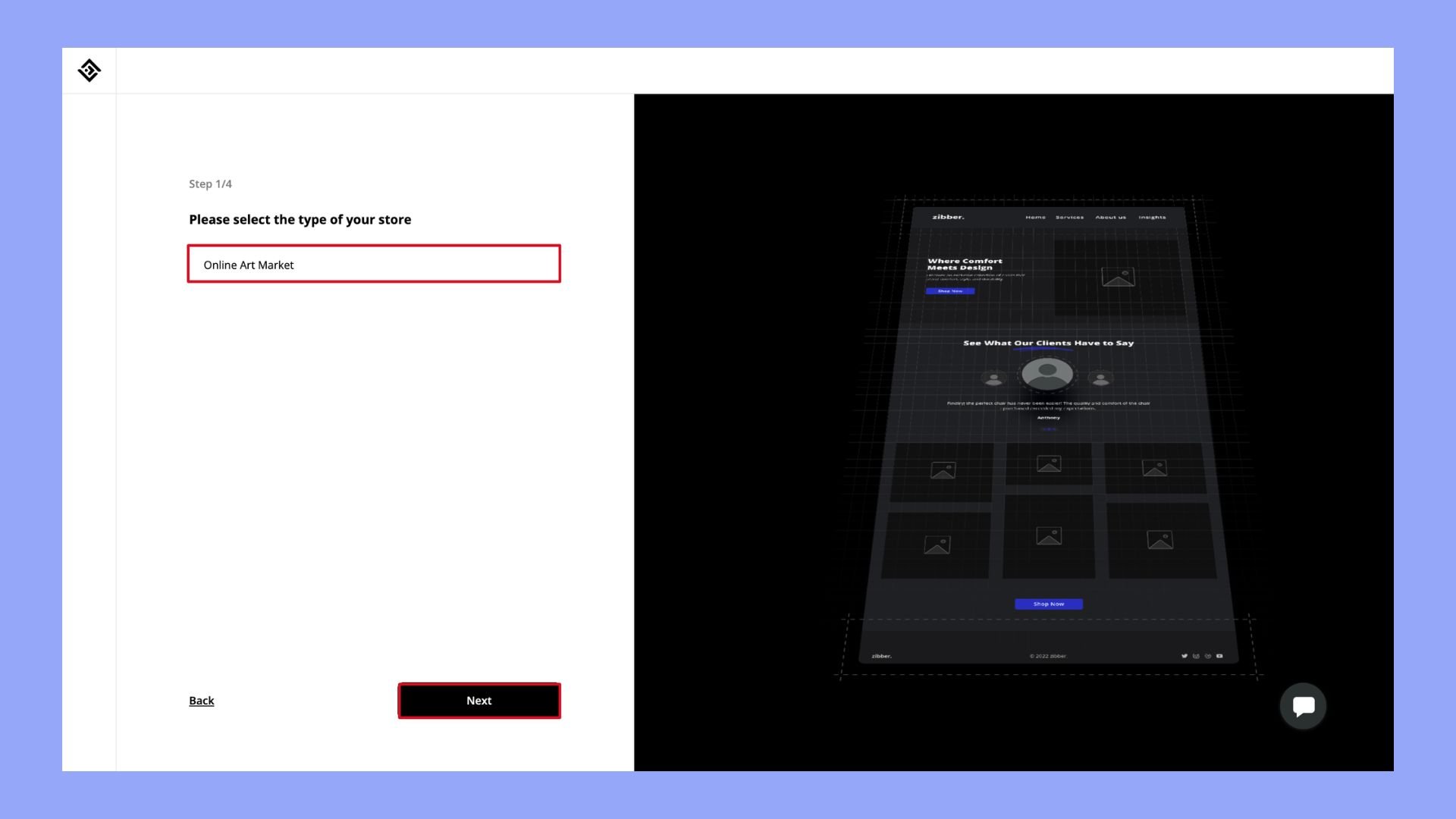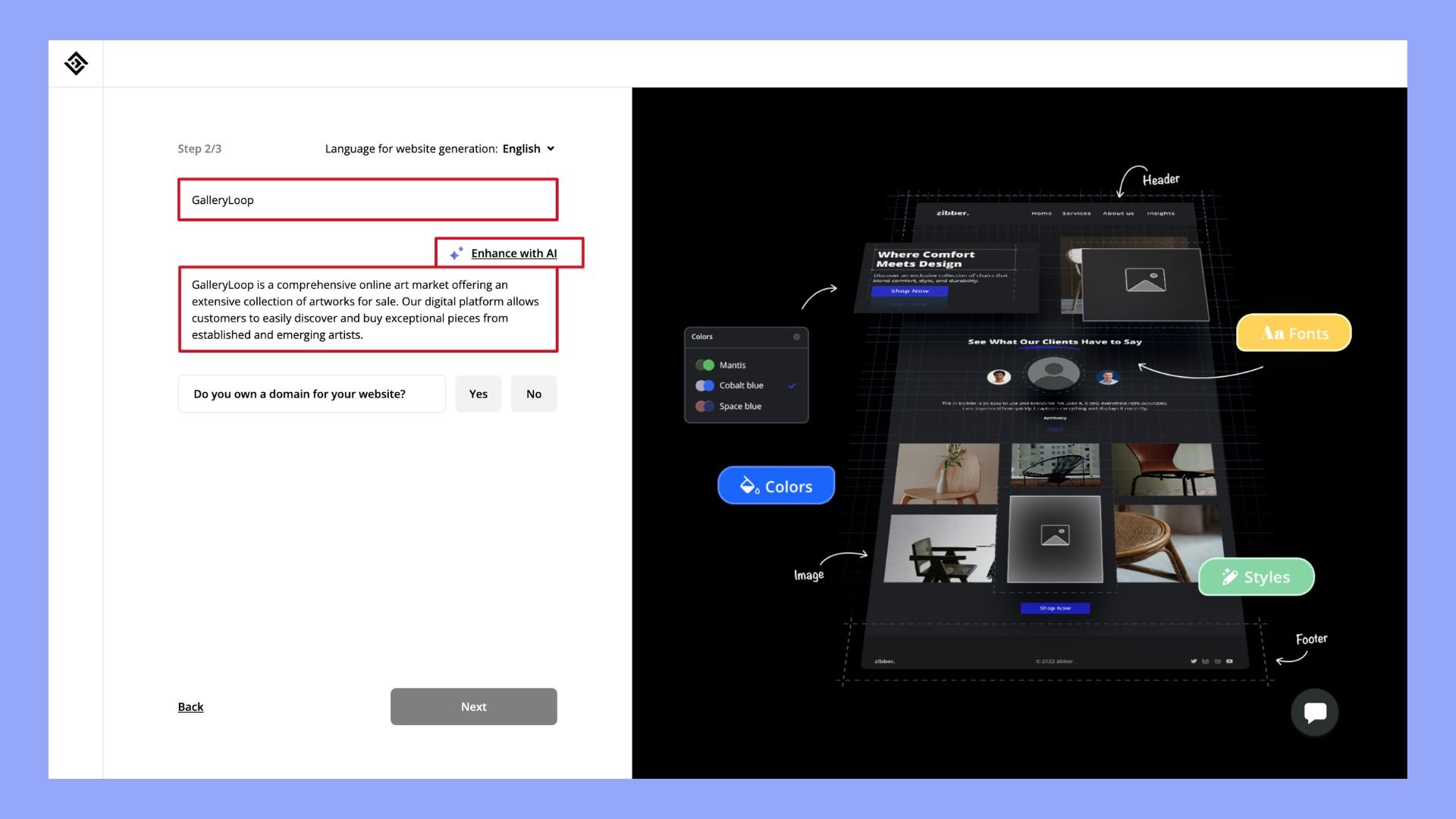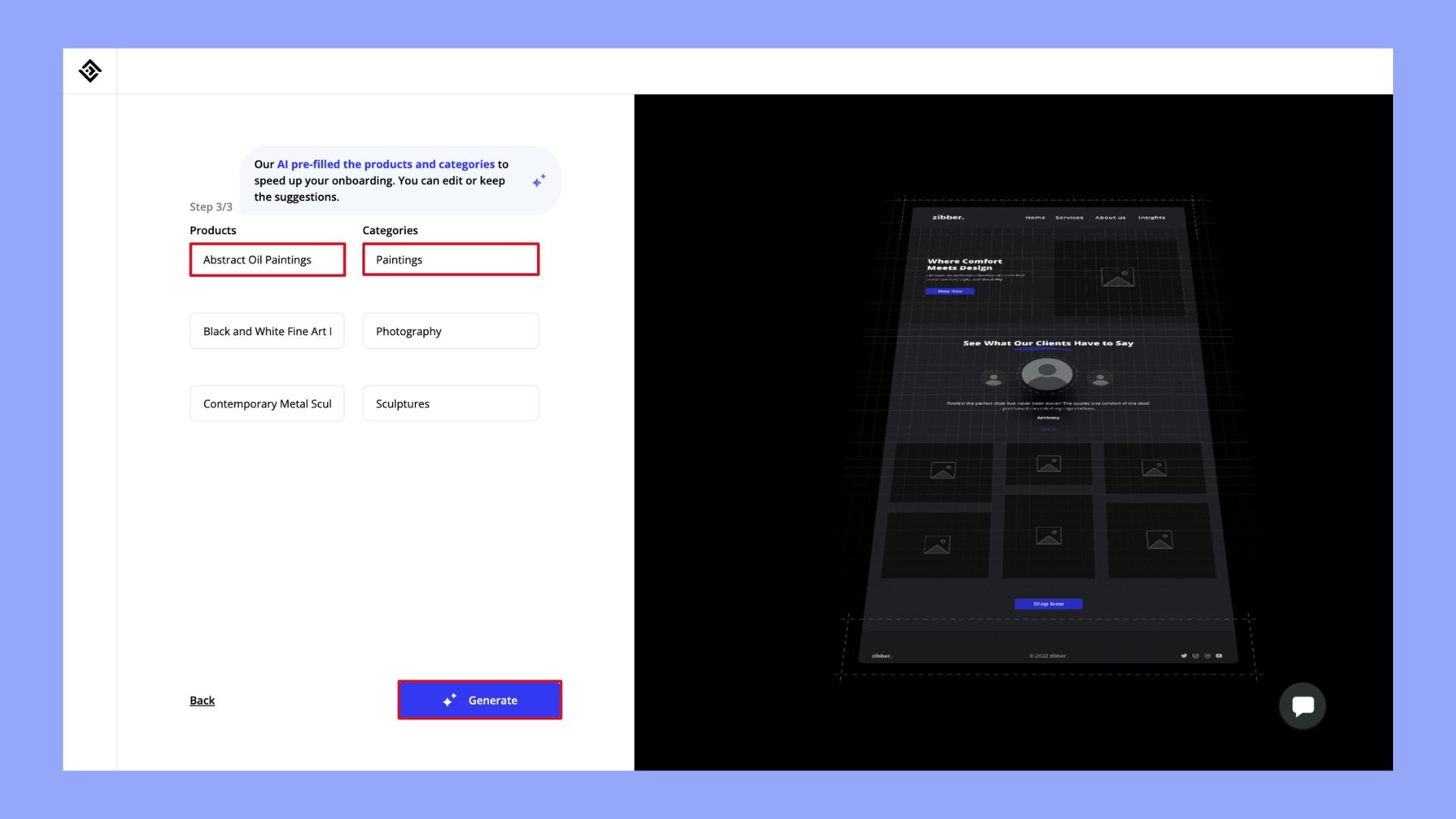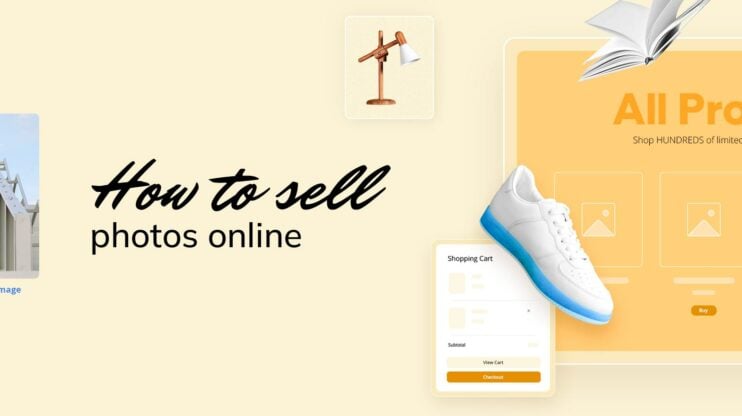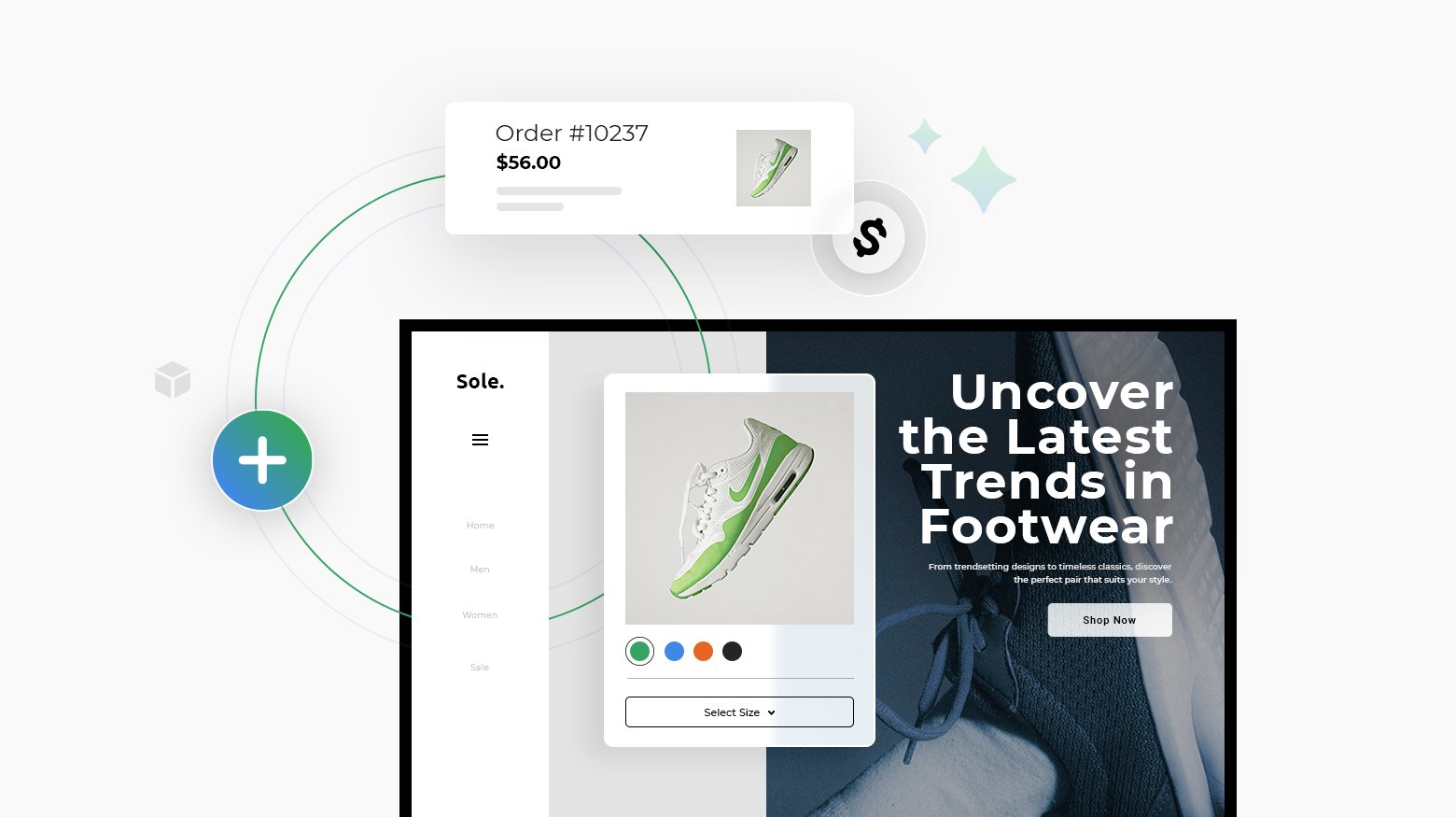The digital marketplace allows artists to reach a global audience, bypassing the limitations of traditional galleries and exhibitions. This guide provides essential tips for thriving in the online art world, covering how to build a strong online presence to operate your ecommerce store, market your art effectively, and navigate ecommerce successfully. Embracing the digital landscape opens new revenue streams and connects you with a diverse and dynamic community of art enthusiasts.

FAQ
How can I sell my art online for beginners?
- Create a portfolio of your work and take high-quality photos.
- Set up an online store or use platforms like Etsy, Redbubble, or Society6.
- Promote your art on social media and build a following.
- Network with other artists and potential buyers.
- Offer various pricing options and consider selling prints in addition to originals.
- Continuously improve your skills and update your portfolio.
What is the best site to sell my art?
- Etsy: Great for handmade and unique art.
- Redbubble: Ideal for print-on-demand products.
- Saatchi Art: Good for selling original art and reaching a global audience.
- Society6: Suitable for artists who want to sell a wide range of products. Research each platform to see which aligns best with your art style and business goals.
How do I start selling my art for money?
- Develop a portfolio showcasing your best work.
- Determine your pricing strategy by researching similar artists.
- Choose a selling platform (online or offline) and set up your store.
- Market your art through social media, email newsletters, and collaborations.
- Participate in local art shows, galleries, and markets.
- Provide excellent customer service and build relationships with buyers.
Is it better to sell art online or in person?
- Online Selling: Broader audience reach, convenience, and the ability to sell internationally. Suitable for building a brand and steady income over time.
In-person selling: Personal connection with buyers, immediate feedback, and often higher sales prices. Ideal for local recognition and networking. Consider a combination of both to maximize exposure and sales opportunities.

Looking to sell online?
Create your custom online store in minutes with 10Web AI Ecommerce Website Builder and take your business online.
Current online art selling market
The online art selling market has grown rapidly in recent years. Understanding current trends, economic projections, and specialized areas will help you navigate the online art world effectively.
Trends within the art market
The online art market has seen significant growth. Virtual art galleries and ecommerce platforms offer new opportunities for artists to connect directly with buyers. Additionally, social media has become a powerful tool for marketing and sales. Art collectors and enthusiasts increasingly use platforms like Instagram to discover new artists.
Some artists are exploring non-fungible tokens (NFTs), drawing collectors interested in digital art. This new trend has created unique opportunities for digital artists and is reshaping the way art is valued and sold online.
Understanding the online art market
Before you start selling your art online, it’s crucial to understand the market. Different platforms and online marketplaces cater to various types of art and artists.
Well-known marketplaces like Etsy are great for handmade and custom art pieces. Others, like ArtPal and Society6, work well for prints and digital art.
Research the demographics of your chosen platform. Who buys there? What are the popular styles? Knowing this helps you tailor your offerings to what buyers want.
Choosing what art to sell
Once you understand the market, decide on what type of art to sell. You can choose from original artwork, prints, or digital art.
Original artwork generally sells for higher prices, attracting buyers looking for unique pieces. Prints and digital art offer a way to reach more customers at a lower price point. You might even consider licensing your art for additional revenue streams.
Keep in mind the cost of materials and production when pricing your pieces. It’s important to cover your expenses while still making a profit.
Financial projections of the market
The financial landscape of online art sales shows promising growth. Reports indicate that online art sales reached $5.9 billion in 2023, and this number is expected to climb steadily.
Platforms like Society6 and Fine Art America enable artists to monetize their work through print-on-demand services, which contributes to rising revenue.
By 2025, it’s projected that online art sales will comprise more than 20% of the global art market, signaling a shift towards digital transactions. Increased online visibility and wider access to global markets support this growth.
Managing shipping costs
- Research carriers: Compare rates from different carriers like USPS, UPS, FedEx, and DHL. Each carrier has different strengths, so choose the one that offers the best rates and services for your needs.
- Calculate accurate costs: Use online tools to estimate shipping costs before setting prices. Consider factors like package dimensions, weight, and destination. Add in the cost of packaging materials for a precise calculation.
- Offer shipping options: Provide multiple shipping options for buyers, such as standard, expedited, and international shipping. This gives them flexibility and helps you cater to a wider audience.
- Streamline processes: Use shipping software or services that integrate with your online store. These tools can automate shipping labels, track packages, and simplify order fulfillment, saving you time and reducing errors.
Specialized segments of the market
Certain segments within the online art market are flourishing. Prints and digital art are particularly popular, benefiting from the accessibility and affordability of these formats.
Sculpture and 3D art also find customers online, attracting collectors looking for unique, tangible pieces. Curators from respected institutions like Spoke Art and Getty Images often use online marketplaces to discover emerging talent.
Custom commissions represent another specialized segment, allowing collectors to request personalized art pieces. This personal interaction between artist and buyer enhances the value and uniqueness of the work.
Online art sales offer diverse opportunities, whether through traditional galleries, digital prints, or unique commissions.

Looking to sell online?
Create your custom online store in minutes with 10Web AI Ecommerce Website Builder and take your business online.
How to sell art online
Selling art online involves various steps, from creating a strong brand to choosing the best platform for your work. It’s key to understand the importance of market research and have a solid business plan to succeed.
Building your brand as an artist
Once you have chosen a platform, it’s time to build your brand. A strong brand helps you stand out and attract buyers.
- Create a story: Share your journey and inspiration behind your artwork. This personal touch can connect you with your audience.
- Consistent visuals: Use a consistent style for your profile picture, logo, and banner. This helps in creating a recognizable image.
- Professional Photos: High-quality images of your artwork are essential. Consider using natural lighting and clear backgrounds.
- Social Media Presence: Use platforms like Instagram and Pinterest to showcase your work. Engage with your followers by posting regularly and responding to comments.
Additionally, consider an artist website where you can integrate a blog or an artist’s page. This provides more room to share your story and process.
Vision
Your vision clarifies why you’re creating and selling art. Define your mission and goals. Are you focusing on original artwork, prints, or even custom art?
Understanding your long-term objectives will guide your business decisions. This vision should reflect your personal artistic journey and goals. It’s the foundation for connecting with a specific audience and setting yourself apart.
Market research
Knowing your market is crucial. Identify who your ideal customers are. Look into what similar artists are doing, including their pricing and marketing strategies.
Visit online marketplaces like Etsy, Saatchi Art, and Redbubble. Study their best-selling items. This homework helps you adjust your offerings to meet market demands, whether it’s fine art, prints, or merchandise like mugs and t-shirts.
Writing a business plan for selling art online
Writing a business plan is important. In your plan, detail your vision, products, pricing strategy, and marketing plans.
Outline potential costs like shipping, materials, and website upkeep. Include sales channels and how you’ll handle fulfillment. This structured approach can help you stay organized and focused.
Determining art prices
Look at similar pieces by other artists. Compare their size, medium, and style to your own. This gives you a Price Per Square Inch (PPSI) or Price Per Square Foot (PPSF) that others use.
Next, consider materials. Calculate your costs: canvas, paint, tools, and any other supplies. Add labor. Decide how much your time is worth. This could be an hourly rate or a flat amount per piece. Factors like your experience and reputation also play a role. Beginners might set lower prices than established artists. Limited editions or original artwork can be priced higher than reproductions.
Understanding commission fees
When you sell art through online platforms, you encounter commission fees. Online platforms, commission rates vary. Etsy, for example, charges a percentage of the sale along with listing fees.
Factor these costs into your pricing strategy. If a gallery takes 50%, and you want to clear $200 for a piece, set the price at $400. For online sales, include shipping in both costs and pricing. Some platforms have monthly fees and transaction fees.
On the other hand, stay informed about the fees at each platform you use. Keep a detailed record of all expenses and commissions. This helps ensure you set prices that cover your costs and provide fair compensation.
Best platforms for selling art online
Choosing the right platform is a crucial step in setting up your online gallery. Platforms like 10Web, Artsy, and Saatchi Art offer different features.
- 10Web.io: Great for building a customized online store. 10Web also offers many tools for managing inventory, payments, and marketing.
- Artsy and Saatchi Art: Perfect if you’re looking for a more curated experience with a focus on fine art. Both have a large following of art enthusiasts and collectors.
- Amazon Handmade: Targets a broad audience.
Explore each platform’s features and fees. Some platforms charge listing fees, transaction fees, or monthly subscriptions.
Packaging art for shipment
- Choose the right materials: Start with a sturdy box. Use heavy-duty cardboard to protect the artwork. Bubble wrap, foam corners, and packing peanuts are excellent for cushioning. Place the artwork in a plastic sleeve to shield it from moisture.
- Wrap it properly: Wrap your art in bubble wrap. Secure the edges with tape to keep it in place. If the artwork is framed with glass, add a layer of cardboard between the glass and the bubble wrap for extra protection.
- Seal and label: After placing the artwork in the box, fill any gaps with packing peanuts or crumpled paper to prevent movement. Seal the box securely with strong packing tape. Label the package with a Fragile sticker and include a return address.
Creating an ecommerce website with 10Web
Having your own ecommerce store provides control over branding and customer experience. Platforms like 10Web AI Website Builder offer features like easy setup, secure payment options, and inventory management.
Here’s a straightforward guide to generating a professional website for your art business:
- Visit 10Web.io and select Generate Your Website.

- Choose the type of website you need – online art market.

- Enter your company name and a brief description. For a more detailed description, you can use the Enhance with AI option.

- Add your products and categories, then click on Generate.

Once the website is generated, choose a template that fits your art style. Customize your site to reflect your personality and brand. Make sure to add a portfolio, product listings, and an about page that tells your story. SEO tools within 10Web can help drive organic traffic to your site.
Navigating licensing agreements
To license your art, you need to understand licensing agreements. These are contracts that let companies use your art for a set period, in specific ways, and often for a fee. Carefully read and negotiate the terms to protect your rights and earn a fair profit.
Look out for:
- Usage rights: Define how and where your art will be used.
- Duration: Specify the length of the agreement.
- Royalty rates: Agree on how much you’ll earn per sale.
- Exclusivity: Decide if you allow exclusive use or can license to others too.
Consider having a lawyer to review the contract which can help ensure you’re protected and fairly compensated.

Looking to sell online?
Create your custom online store in minutes with 10Web AI Ecommerce Website Builder and take your business online.
Marketing and customer engagement
To successfully sell art online, it is essential to effectively market your art and engage with customers.
Diverse methods to effectively connect with your audience
You can connect with your audience through various methods, including social media, email newsletters, and pay-per-click ads. SEO is crucial for helping people find your art online. Collaborating with other artists or influencers can expand your reach. You can also join and engage with Facebook groups dedicated to art. Building a network of artists and art lovers helps in creating a supportive community.
Customer service and engagement
Engaging with your customers is crucial for building a loyal client base. Respond promptly to inquiries through your online store, ecommerce platforms, or social media channels. Friendly and timely responses can make a big difference.
Use email marketing and social media to keep your customers informed about new artworks, promotions, and events. Personalize your communications to make customers feel valued. Offering loyalty programs or exclusive discounts to returning customers can also boost engagement.
Maintain a FAQ section on your website to answer common questions about your art, shipping, and purchase processes. This helps reduce the number of inquiries you need to respond to directly.
Dealing with returns and reviews
Handling returns effectively is essential for maintaining customer trust. Clearly state your return policy on your website and make it easy to find. This helps manage customer expectations and reduces potential conflicts.
When a return is requested, process it quickly and professionally. Make sure your customers know how to return items and what steps they need to follow. Offering prepaid return labels can simplify the process.
Encourage customers to leave reviews after their purchase. Positive reviews can enhance your store’s reputation and attract new customers. Respond to reviews, both positive and negative, to show that you value feedback. Address concerns politely and offer solutions to improve customer satisfaction.
Creating merchandise from art
Turning your art into merchandise is a great way to expand your reach and make extra income. Popular items include prints, wall art, t-shirts, and mugs. Each product offers a way to showcase your art and attract different buyers.
To get started:
- Select products: Choose items that fit your art style.
- Find a manufacturer: Look for companies that handle print-on-demand or bulk orders.
- Design and mock-ups: Create digital versions of how your art looks on each product.
- Set prices: Factor in production costs, your profit margin, and market rates.
- Promote: Use online platforms, social media, and your website to showcase and sell your merchandise.
Content marketing strategies
Creating content that resonates with your audience is key. Start by writing blogs about your artistic process, inspirations, and techniques. This not only engages your readers but also improves your site’s SEO. High-quality photos and videos showcasing your work can captivate potential buyers.
Another strategy is to offer tutorials or behind-the-scenes content. This gives your audience a glimpse into your creative process, making them feel more connected to your work. Engage with your audience by responding to comments and encouraging user-generated content where fans share their experiences with your art.
Also, consider email marketing. Collect email addresses from visitors to your site and send out regular newsletters. Keep them updated about new pieces, sales, and upcoming exhibitions. Personalizing your emails can increase engagement and loyalty.
Leveraging social media
Social media platforms like Instagram, Facebook, and Pinterest are essential for artists. On Instagram, use hashtags relevant to your art to increase visibility. Post regularly and engage with your followers by liking and commenting on their posts.
On Facebook, create a business page and join art groups to share your work with a targeted audience. Use Facebook ads to reach potential buyers who might not find you otherwise.
Pinterest can be a great tool for visual searches. Create boards related to your art and pin high-quality images of your work. Use rich pins to provide more information about your artwork. Finally, remember to link back to your online store to drive traffic and sales.
Interactive content and blog posts
Creating interactive content and blog posts can significantly enhance customer engagement. Interactive content includes quizzes, surveys, and polls. These elements make visitors spend more time on your site and increase the chances of them purchasing your art. Writing blog posts about your art journey, inspirations, and techniques makes your art more relatable. Share your blog updates on your social profiles to drive traffic. Collaborate with other artists for guest posts to offer a diverse range of content.
Expanding your sales channels
To sell art effectively, it’s important to expand your sales channels. Use both online marketplaces and collaborations with galleries to reach a wider audience.
Exploring online marketplaces
Selling on online marketplaces can boost your visibility and sales. Sites like Etsy, Amazon, and eBay are great places to start. Each platform has unique features that can help you reach different types of buyers.
- Etsy: Ideal for handmade and unique art. You can set up a store easily, list your art, and connect with collectors worldwide.
- Amazon: Offers a massive customer base. Listing your art here can increase exposure. It’s good for both originals and prints.
- eBay: Useful for auctions and direct sales. You can reach international buyers and set your pricing strategy.
Collaboration with galleries and dealers
Partnering with galleries and dealers can also expand your reach. They have established networks and can provide credibility to your work.
- Galleries: Working with local or online galleries helps you connect with serious art buyers and collectors. They can display your art physically or virtually, increasing visibility.
- Dealers: Art dealers often have a list of collectors looking for specific types of art. Collaborating with them can open doors to niche markets and high-value sales.

Looking to sell online?
Create your custom online store in minutes with 10Web AI Ecommerce Website Builder and take your business online.
Leveraging print-on-demand services
Print-on-demand services allow you to create and sell custom products without needing to hold inventory or manage shipping. By using these services, you can focus on designing and promoting your art.
Benefits of print-on-demand
Print-on-demand services provide several key benefits for artists. First, they eliminate the need for upfront investment in inventory. You don’t have to invest in bulk printing or warehousing products like t-shirts, mugs, or prints.
Second, these services handle order fulfillment. When a customer buys your art, the service prints and ships it. This saves you time and effort.
Third, you can test different designs. Since there’s no inventory, you can offer a variety of designs and see what sells best. This helps you understand what your audience likes.
Choosing a print-on-demand partner
Selecting the right print-on-demand partner is crucial. Start by researching various providers. Look at their product range to ensure they offer items you want to sell, like t-shirts and mugs.
Check reviews about their print quality and shipping times. High-quality prints and reliable shipping are essential for customer satisfaction.
Additionally, consider the integration options with your online store. Many print-on-demand services easily integrate with popular ecommerce platforms. This makes managing your store simpler.
Lastly, compare pricing structures. Some services charge per item, while others may have monthly fees. Find a partner with costs that match your budget without sacrificing quality.

Looking to sell online?
Create your custom online store in minutes with 10Web AI Ecommerce Website Builder and take your business online.
Evaluating and adjusting your strategy
Regularly evaluating and adjusting your sales strategy is crucial to success in online art sales. Using analytics and feedback will help refine your approach, while adapting to market trends ensures your art remains relevant.
Utilizing analytics and feedback
Use web analytics tools like Google Analytics to track your website traffic, bounce rates, and conversion rates. This data helps you understand which pieces of art are popular and which marketing strategies work best.
Set up goals and events to measure user interactions such as clicks on artwork images or completed purchases. These insights allow you to pinpoint areas needing improvement.
Gather feedback from customers through surveys or follow-up emails. Positive feedback lets you know what resonates, while constructive criticism highlights areas for growth. Incorporate feedback to enhance your product offerings and customer experience.
Adapting to market trends
Stay updated with current market trends to keep your art appealing to potential buyers. Subscribe to industry newsletters or join artist communities to learn about emerging styles and popular mediums. Also, try to analyze the techniques, presentation, and marketing efforts of successful artists. Adapt these strategies to fit your unique style and brand.
Keep in mind that flexibility is key. If a particular type of artwork or sales method isn’t working, be willing to pivot. Trends can change quickly, so maintaining a dynamic sales approach helps you stay ahead in the global art market.
Conclusion
Selling art online opens up numerous opportunities for artists to reach wider audiences and boost their sales. By keeping up with market trends, developing a strong brand, and choosing the right platforms, artists can succeed in the digital marketplace. As the online art market evolves, artists who adapt and embrace these changes will find great success in sharing their creative work with the world.



